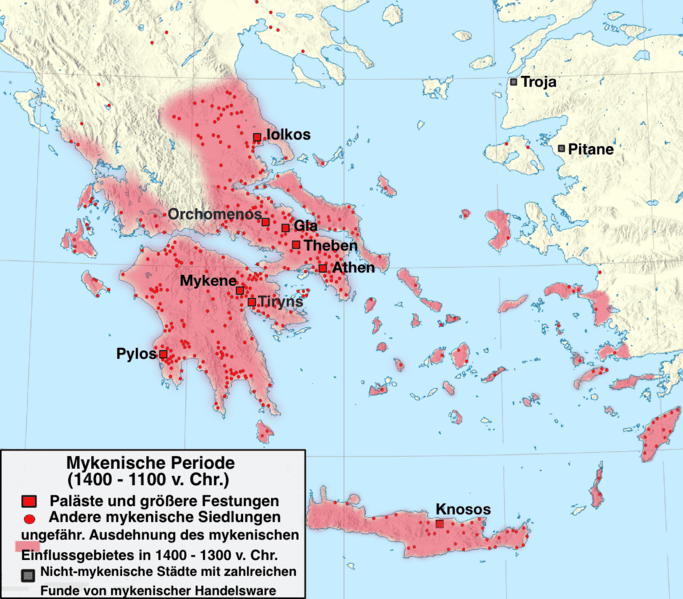Modern science confirms one of the oldest myths about the Ancient Greeks.
Since the days of Homer, the ancient Greeks have praised their “Mycenaean ancestors” — in myths and legends, the likes Agamemnon and Odysseus live on to this day. While these legendary figures are considered fictitious, actual Mycenaean did exist. They were a civilization from the end of the Bronze Age which dominated what is today the south of Greece and many of the islands around it. It’s not really clear what happened to them.
Scholars have long debated whether there was any truth to the Greeks’ belief that they stemmed from the Mycenaeans, or whether the latter just disappeared around 3,200 years ago. Now, a new DNA study suggests that the theory stands true.

Map of Mycenaean Greece 1400-1200 BC: Palaces, main cities, and other settlements. Image via WIkipedia.
Researchers analyzed DNA from the teeth of 19 people, five of which were Mycenaean and ten of which were Minoan. The Minoans are another ancestral civilization in the Greek area (on the island of Crete), often considered the earliest one in Europe. The Minoans were way ahead of their time, but a cataclysmic eruption on the island of Thera (present-day Santorini), about 100 km from Crete destroyed most of the plants on the island and left the Minoans starving and vulnerable to attack. They were conquered, probably by the Myceneans themselves. The other five people were from other early farming or Bronze Age (5400 B.C.E. to 1340 B.C.E.) cultures in Greece and Turkey.
They analyzed 1.2 million letters of genetic code across these 19 people, comparing them to 334 other ancient people from other parts of the world and 30 modern Greeks. The analysis shows that Mycenaeans and Minoans were most closely related, David Reich and colleagues report August 2 in the journal Nature.
“Who these Bronze Age peoples were — the people who lived in a world dimly remembered in the poetry of Homer — has been a great mystery,” explains Reich, an evolutionary geneticist at Harvard Medical School. “We set out to investigate the origins of these ancient civilizations.”
This doesn’t really come as a surprise, but it’s a new way of looking at the situation. Until now, everything we knew about the Mycenaeans and the Minoans came from archaeology — now we have genetic information to add to the puzzle.

Bronze age ‘Flotilla’ fresco from room 5, in the west house at the Minoan town of Akrotiri, Santorini, Greece. Image via Wikipedia.
Both these civilizations got over 70% of their DNA from early farmers in Greece and Turkey but the Mycenaeans had a bit of DNA from northern people (from Siberia or eastern Europe). The fact that the Mycenaeans have this DNA but the Minoans don’t seems to indicate that a wave of immigrants came from the European steppe, reached Greece, but didn’t reach Crete.
As for the overall looks, both ancient peoples carried genes for brown eyes and dark hair, which is consistent with how they are depicted in paintings.
It’s impressive that the study links two seemingly incompatible worlds: the mythical world of Greek legends, and the reality of Ancient Greece. The Mycenaeans were brilliant engineers and heavily militarized. Their culture is named for Mycenae, a site associated with the legendary King Agamemnon, who supposedly led the Greeks in the war against Troy. The Minoans were less concerned by military affairs, and focused on art and maritime exploration. Their sophisticated palaces and far-reaching trade routes shaped civilization, and according to legend, once hosted the Minotaur in his labyrinth. There’s now a solid link between these people and the real Greeks.
“This increases the weight of evidence that Greek was derived from the same expansion of peoples,” he says.
Archaeologist Kristian Kristiansen of the University of Gothenburg in Sweden, who was not involved in the work, agrees.
“The results have now opened up the next chapter in the genetic history of western Eurasia—that of the Bronze Age Mediterranean.”
Journal Reference: Iosif Lazaridis et al — Genetic origins of the Minoans and Mycenaeans. doi:10.1038/nature23310










